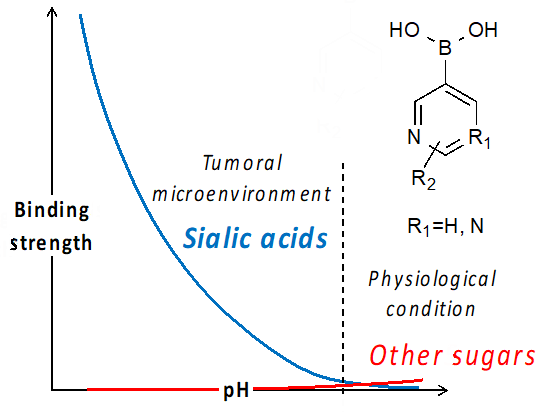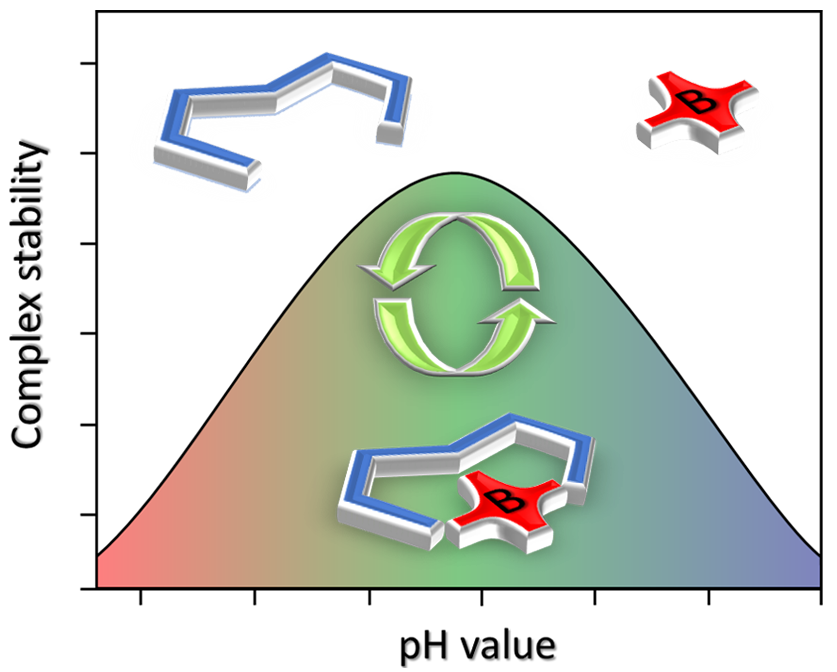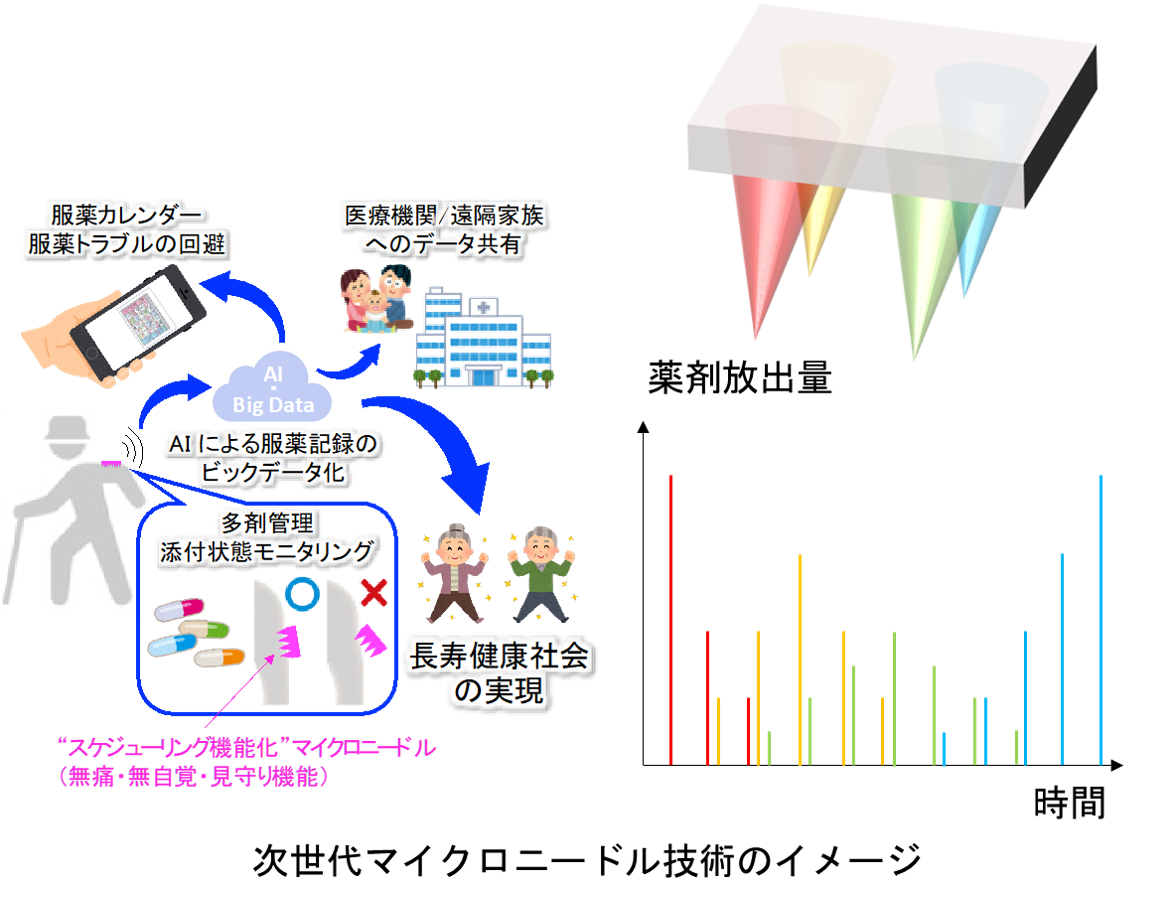Research
Diabetes treatment using “patch-on artificial pancreas”
When a boronic acid that reversibly binds glucose is introduced into a suitable polymer gel network, a reversible change in water content is induced by a change in ion osmotic pressure associated with a shift in dissociation equilibrium in response to a change in glucose concentration. At the same time, a thin dehydrated contraction layer called the “skin layer” that forms on the gel surface acts as a control mechanism for insulin release according to blood sugar levels. We are conducting research on the practical application of a completely synthetic “patch-on artificial pancreas” that does not use any machines or proteins.
Diagnostic and therapeutic technology applying molecular recognition using boronic acid
Sialic acid (Neu5Ac) is present in large quantities at the terminal ends of cellular sugar chains, and its dynamics are related to cellular phenomena such as development, differentiation, and disease. In particular, it is universally overexpressed on the surface of cancer cells. Since sialic acid is also present in normal tissues, a tumor environment-specific activation mechanism is required to safely carry out drug therapy targeting it. We solved this problem using boronic acid. Furthermore, we are working to develop cancer stem cell targeted therapy, cancer immunotherapy, boron neutron capture therapy, and extracellular particulate capture and diagnostic device technology that integrates electronics.
Development and application of environmentally responsive cleavage chemistry using boronic acid-containing protecting groups
Although boronic acids are small molecules, they interact with a variety of biomolecules, and their strength and selectivity can be varied through synthetic chemistry. In this theme, we are developing a new cleavage reaction system that has reversible molecular recognition ability in water by developing the chemistry of protecting groups using boronic acids. This is basic research aimed at developing new drug delivery systems.
Next-generation microneedle technology to easily and reliably manage multiple medications at home
There is a large unmet need in the process of allowing anyone to take prescribed drugs accurately, easily, and painlessly. We will develop a new transdermal DDS that overcomes the challenges of medication administration and contribute to the provision of safe and secure home medical care. This technology not only improves the quality of life of patients, but also brings great news to medical professionals.




